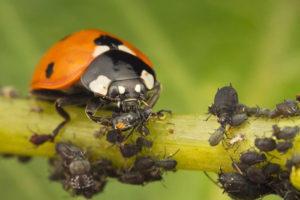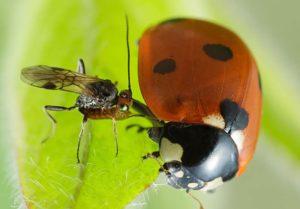Who eats ladybugs: beneficial beetle hunters
Acquaintance with cute insects, ladybugs, many lead from childhood. These spotted "suns" sometimes fly on a person, but are more often found on blades of grass and flowers, sunbathing in the sun. In fact, these animals are predators, which are few and too tough for almost anyone.
Ladybug Diet
Ladybugs are small insects with bright colors. However, they are one of the most important assistants to gardeners and gardeners. They massively eat aphids on plants.
But in the absence of a favorite treat, they can switch to:
- small larvae;
- ticks;
- caterpillars;
- insect eggs.
Who eats ladybugs
Of the natural enemies, only a few are worth noting. They are eaten only by hedgehogs and predatory praying mantises. They catch bright insects that rest in the sun or in autumn when they are at rest.
Another enemy is the dinocampus. This is an insect with wings that lays its eggs in the bodies of adults and larvae. Inside, the egg develops and feeds on the victim's body, leaving a void.
The defense mechanism of ladybugs
Each animal plays an important role in the food chain. But ladybugs try to avoid the fate of being eaten and prefer to defend themselves from enemies in several ways. There are three main ways.
The very color and bright color of the ladybug is striking. Such a catchy color in nature most often indicates just about toxicity. The scientific term for this phenomenon is aposematism.
If a bird or other insect tries to grab the bug, the ladybug uses a different method called thanatosis - pretending to be dead. She presses her legs and freezes.
The geolymph contains poisonous alkaloids that do not harm the ladybug itself, but make it inedible. In case of danger, the beetle secretes it from the joints and holes. It is bitter, smells bad and irritates mucous membranes. If a bird grabs a ladybug, it will immediately spit it out.
Interestingly, hue and toxicity are interrelated. The most poisonous are those individuals that have a brighter color.
Conclusion
Ladybugs are ubiquitous and extremely active. They eat a large number of insects from their own diet.
However, they themselves rarely become prey to other animals or birds. They have special protection methods that work almost perfectly.
Previous
